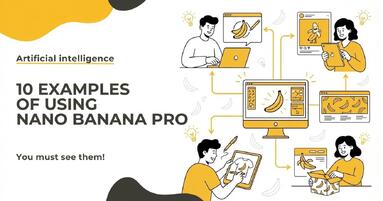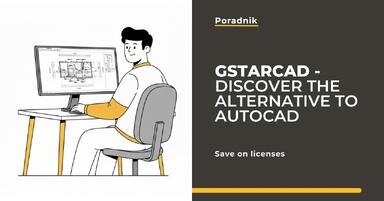Publication date: 28-01-2025 | Update date: 03-02-2025 | Author: Mateusz Ciećwierz
Raster and Vector Graphics - Comparison
Vector graphics are geometrically described as points and curves in a coordinate system. Vector files are very lightweight and scalable, making them suitable for use as logos, schematics, and web graphics. Raster graphics are stored as a bitmap, where each pixel has assigned parameters. Raster files are much heavier and cannot be scaled without loss. Raster graphics are used in creating photorealistic projects, such as digital painting, digital art, and concept art.
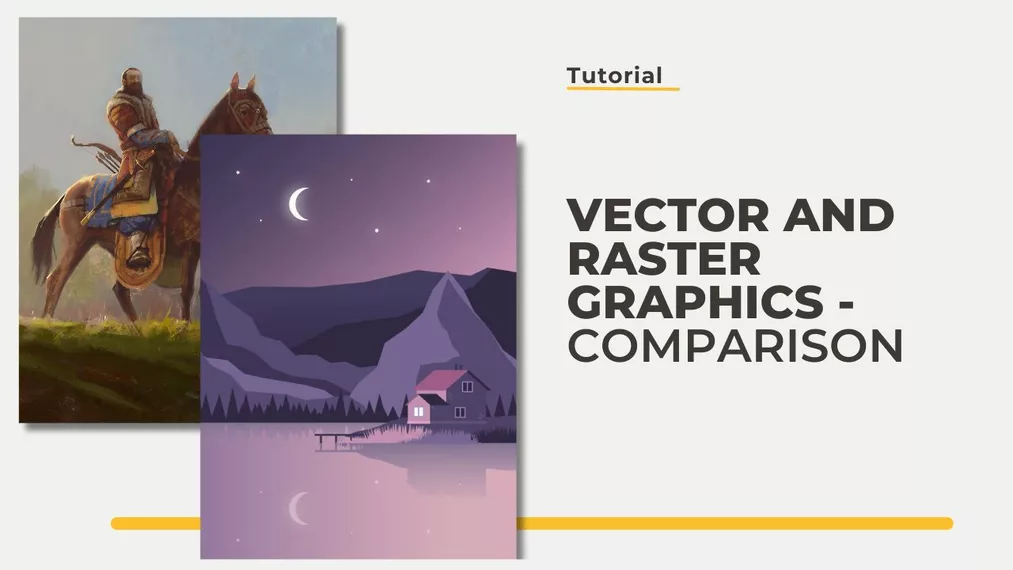
Types of Computer Graphics: Vector and Raster
In the simplest terms, computer graphics can be divided into two types: raster graphics and vector graphics. An image in raster format is simply a collection of individual pixels that together create a specific image. When you start to enlarge a raster graphic, you will notice visible pixels along the edges. Depending on the resolution and file size, pixels will become visible sooner or later.
In the case of raster graphics, the visible image is not saved in the form of pixels. Instead, we have mathematical formulas that place points and curves on a coordinate system. That's why vector graphics can be freely enlarged, and the edges remain perfectly sharp.
On our blog, you will find a series of tutorials on both raster graphics, such as digital painting, and vector graphics.
Differences between Raster and Vector Graphics
The differences between raster and vector graphics concern:
- Storage method and file formats
- File size
- Scalability and loss of image quality
- Applications
- Software for creating images
Read the article to learn about the advantages and disadvantages of each of these two types of computer graphics.
File Size and Storage Format
Image storage is one of the main differences between raster and vector graphics. Raster images, especially in high resolution, can generate huge files. On the other hand, vector files, saved in the form of mathematical equations and curves, take up less space.
The most popular format for saving vector graphics files is .svg. You can also come across formats such as .pdf, .xml, .eps, .ai. Meanwhile, raster graphics files most often come with extensions such as .bmp, .jpg, .tga, .psd, and .png. Professional photographers, taking pictures with digital cameras, start post-processing on files saved in the .raw format.
Scalability and Editability
The possibilities of editing and scaling images are another major difference between the two types of graphics. This difference results from the way the image is saved.
In the case of vector graphics, based on points and curves saved in a coordinate system, the possibilities of lossless scaling are basically unlimited. Vector graphic files are used for projects where scalability, ease of editing, and pattern repeatability are important.
Raster graphics are always limited by resolution. Therefore, images saved in raster format cannot be enlarged arbitrarily because we will always reach visible pixels. Of course, the larger the file size and the higher the resolution, the later we will notice individual pixels. However, it must be remembered that raster graphics are not as easy to scale as vector graphics and therefore are not suitable for uses such as logo design.
Vector graphics give the user unlimited scaling capabilities without loss of quality. Raster graphics are limited by file resolution. In the case of raster images, there is always a limitation in the form of a single pixel.
What is Vector Graphics Used For?
Vector graphics are used in all kinds of projects that require scalability and editability. The most popular examples of vector format images include: logos, maps, illustrations, and print design projects with a specific aesthetic.
Vector graphics are ideal for 2D projects where we see distinct color separations. The most common uses of vector graphics include:
- schematics,
- logos,
- illustrations in a specific style (with sharp edges, distinct color separation, without gradient transitions),
- maps
See an example illustration in the form of vector graphics:
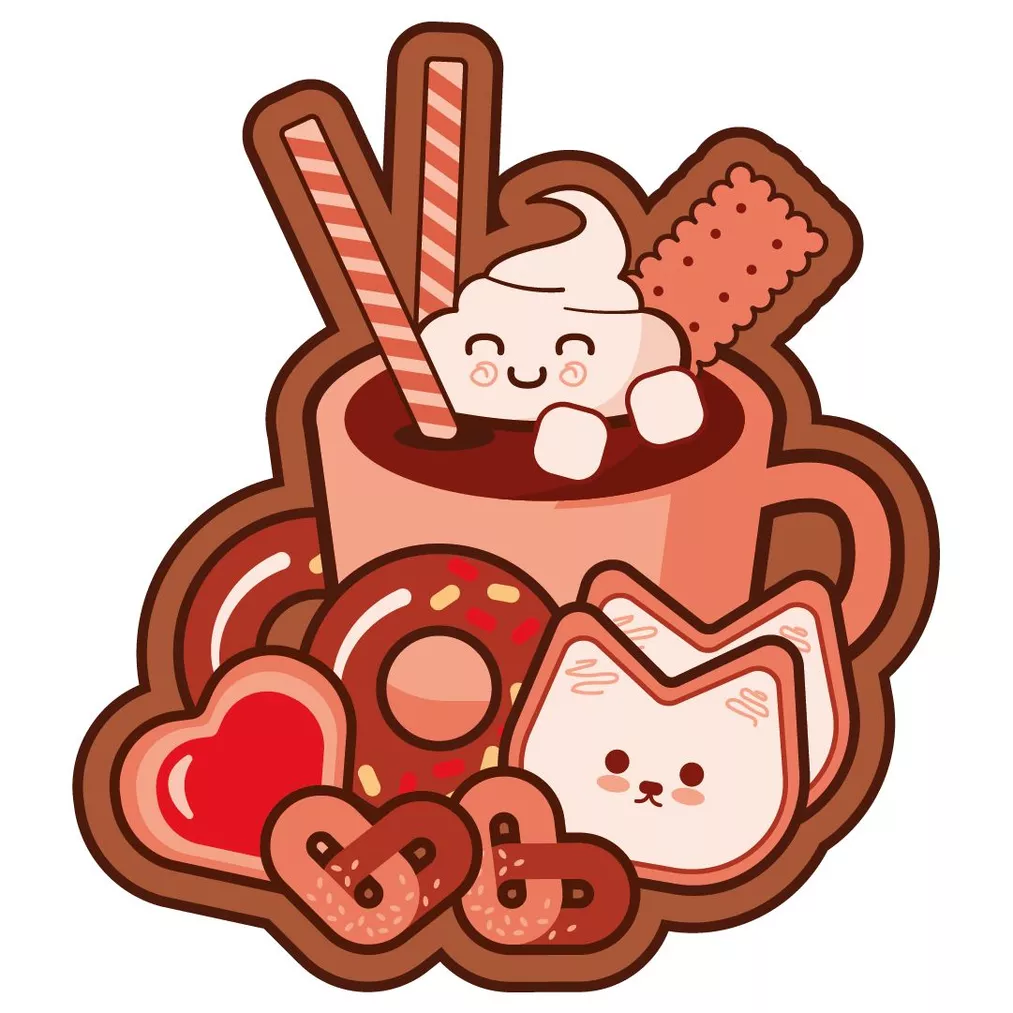
What is Raster Graphics Used For?
Raster graphics are ideal for photographs and images. They are used by visual art creators designing characters for computer games. Also, in computer animations, textures saved in raster format are applied to 3D models.
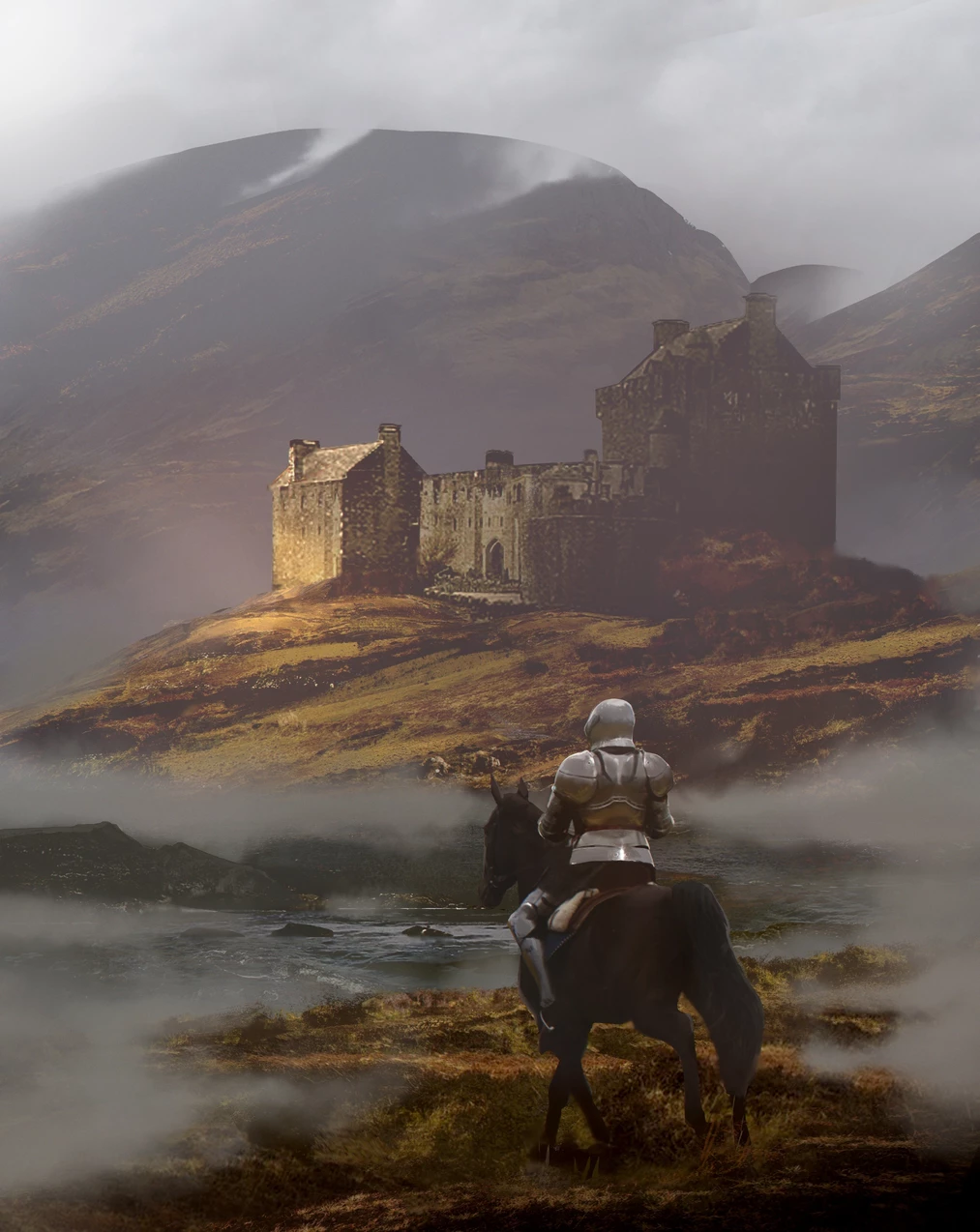
Raster graphics from the digital art course - advanced techniques.
Which Software to Choose for Vector and Raster Graphics?
Both types of graphics have their own rules and are used for different purposes. The choice of software depends on the type of graphics you want to create. You already know the most popular uses of both types of computer graphics. Depending on them, you can choose between Adobe Photoshop and Adobe Illustrator.
Adobe Photoshop—Raster Graphics Software
One of the most popular programs, setting global standards in graphic software, is Adobe Photoshop. It is a comprehensive tool where you can create any image you dream of. If you want to develop your skills in creating digital art projects, check out our offer of Adobe Photoshop courses. Among others, we offer an extensive course on the basics of digital painting or advanced techniques in Photoshop. In addition to courses, we also have valuable free digital painting tips in Photoshop. Check them out to develop your skills.
A free alternative to paid Photoshop is GIMP. It is an open-source program for creating, processing, and editing raster graphics. Start with it if you want to find out if digital art is for you.
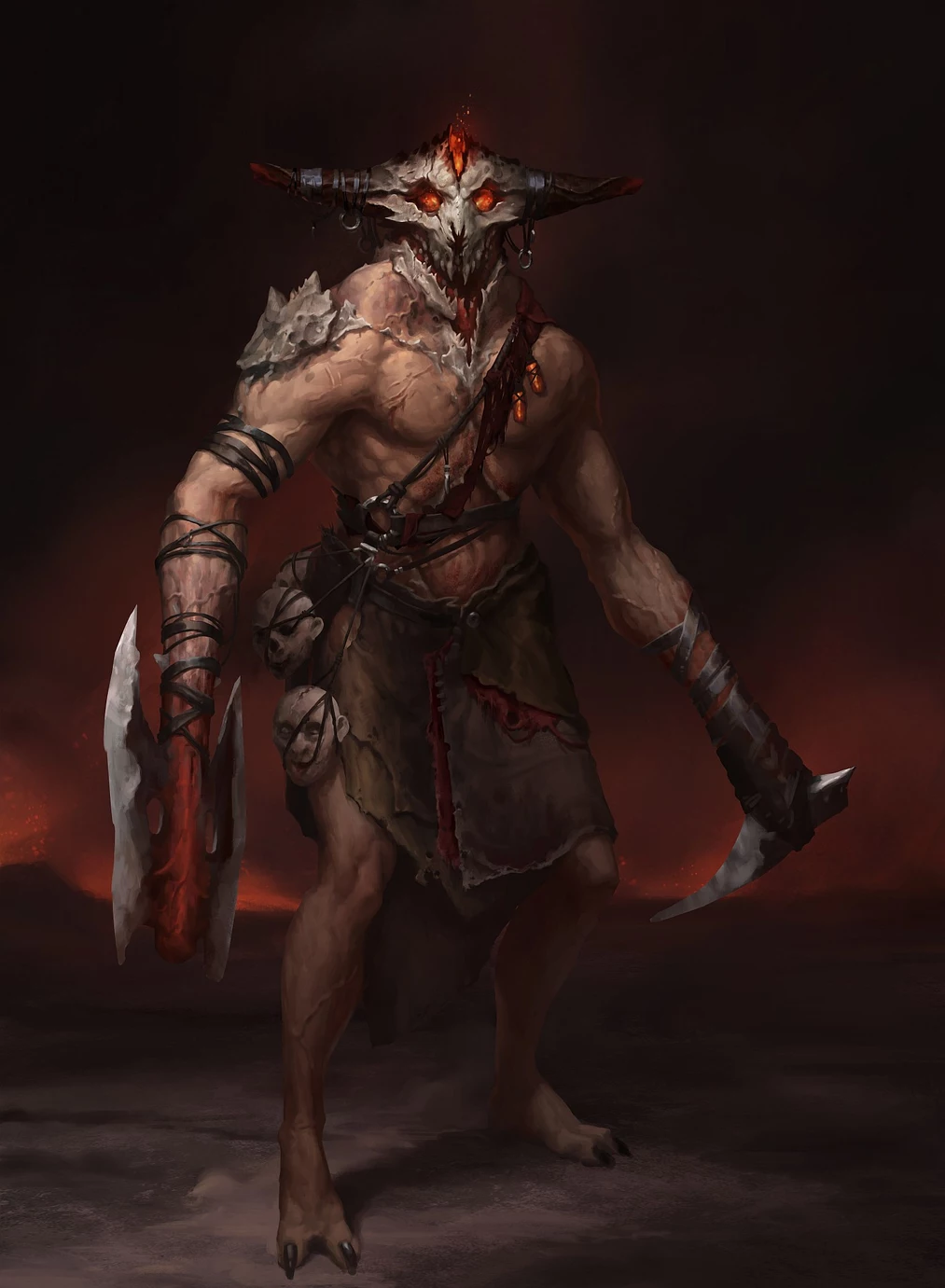
Character designed in the Concept Art, Digital painting - Character design course.
Adobe Illustrator—Functional Software for Vector Graphics
If you want to create graphics for the internet, illustrations for books, or design posters and leaflets for printing, you need vector graphic software. In this case, check out Adobe Illustrator and our training. It is an intuitive tool designed for vector graphics. To start, take the Adobe Illustrator course for beginners. You will gain solid foundations that you will later use in your work on subsequent projects. Be sure to check out the Adobe Illustrator tutorials on our blog. You will learn, among other things, how to convert raster graphics to vector or how to round corners.

Vector illustration from the Illustrator - Designing three graphics from scratch course.
Raster and Vector Graphics—Advantages and Disadvantages
Advantages of Vector Graphics
- It does not work well for artistic projects with subtle color transitions
- Not suitable for reproducing photorealistic projects
Disadvantages of Vector Graphics
- Perfect for all kinds of print projects in various formats
- Vector graphic files are very small, easy to save, store, and share
- Allows for scaling without loss of quality
Advantages of Raster Graphics
- Allows for creating photorealistic images
- Works great for projects with gradients, subtle tonal transitions, and a large amount of detail
Disadvantages of Raster Graphics
- High-quality files are very heavy, making them difficult to share and store
- Scaling is strongly limited by resolution, there is always a limit to enlargement, beyond which individual pixels will be visible
Differences between Vector and Raster Graphics—Summary
As you can see, vector graphics differ from raster graphics in many aspects, from file storage method to size and scaling capabilities. Hence, there is also a differentiation in the applications of both types of images.
Vector graphics are perfect for creating logos, animations, and schematics. On the other hand, raster graphic files are photorealistic digital art. Lossless scaling allows for the use of vector images on websites and in print files. In the case of vector graphics, it is possible to quickly change the print format, for example, from leaflets to posters, without losing quality. Moreover, the relatively small size of the files means that they can be quickly sent and shared. Additionally, graphic programs for creating vector graphics have a simpler interface than programs for raster formats.
Read on our blog
-
![10 practical examples of using Nano Banana Pro in practice that you must see!]()
10 practical examples of using Nano Banana Pro in practice that you must see!
Discover 10 practical applications of Nano Banana Pro! From photo editing to advertising graphics - check out Google's AI capabilities. -
![How to use Nano Banana Pro and how much does it cost? A practical guide for beginners]()
How to use Nano Banana Pro and how much does it cost? A practical guide for beginners
Learn how to use Nano Banana Pro for free via Gemini, when it’s worth paying, and which solution will be best for you! -
![Artificial intelligence - AI - for furniture manufacturers - see what possibilities it offers!]()
Artificial intelligence - AI - for furniture manufacturers - see what possibilities it offers!
Discover the AI tools and workflows that enable creating packshots, material variants, and interior arrangements: in practice, step by step. -
![Alternative to AutoCAD - Discover GstarCAD with a Perpetual License]()
Alternative to AutoCAD - Discover GstarCAD with a Perpetual License
Looking for a cheaper alternative to AutoCAD? GstarCAD is a professional CAD tool that costs up to 5 times less. See what it offers!

